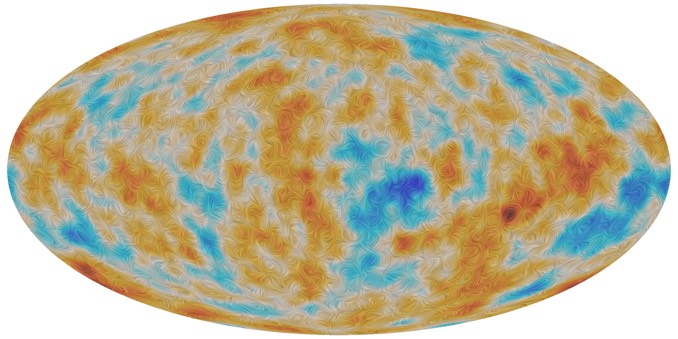
ESA’s Planck satellite has found no new evidence for the puzzling cosmic anomalies that appeared in its temperature map of the Universe. The latest study does not rule out the potential relevance of the anomalies but they do mean astronomers must work even harder to understand the origin of these puzzling features.
Planck’s latest results come from an analysis of the polarisation of the Cosmic Microwave Background (CMB) radiation – the most ancient light in cosmic history, released when the Universe was just 380 000 years old.
The satellite’s initial analysis, which was made public in 2013, concentrated on the temperature of this radiation across the sky. This allows astronomers to investigate the origin and evolution of the cosmos. While it mostly confirmed the standard picture of how our Universe evolves, Planck’s first map also revealed a number of anomalies that are difficult to explain within the standard model of cosmology.
The anomalies are faint features on the sky that appear at large angular scales. They are definitely not artefacts produced by the behaviour of the satellite or the data processing, but they are faint enough that they could be statistical flukes – fluctuations which are extremely rare but not entirely ruled out by the standard model.
Alternatively, the anomalies might be a sign of ‘new physics’, the term used for as-yet unrecognised natural processes that would extend the known laws of physics.
The history of the Universe
To further probe the nature of the anomalies, the Planck team looked at the polarisation of the CMB, which was revealed after a painstaking analysis of the multi-frequency data designed to eliminate foreground sources of microwave emission, including gas and dust in our own Milky Way galaxy.
This signal is the best measurement to date of the so-called CMB polarisation E-modes, and dates back to the time when the first atoms formed in the Universe and the CMB was released. It is produced by the way light scattered off electron particles just before the electrons were gathered into hydrogen atoms.
Polarisation provides an almost independent view of the CMB, so if the anomalies were also to show up there, this would increase astronomers’ confidence that they could be caused by new physics rather than being statistical flukes.
While Planck was not originally designed to focus on polarisation, its observations have been used to create the most accurate all-sky maps of the CMB polarisation to date. These were published in 2018, greatly improving the quality of Planck’s first polarisation maps, released in 2015.
The CMB polarisation on large angular scales
When the Planck team looked at this data, they saw no obvious sign of the anomalies. At best, the analysis, published today in Astronomy and Astrophysics, revealed some weak hints that some of the anomalies may be present.
“Planck’s polarisation measurements are fantastic,” says Jan Tauber, ESA Planck project scientist. “Yet in spite of the great data we have, we don’t see any significant traces of anomalies.”



